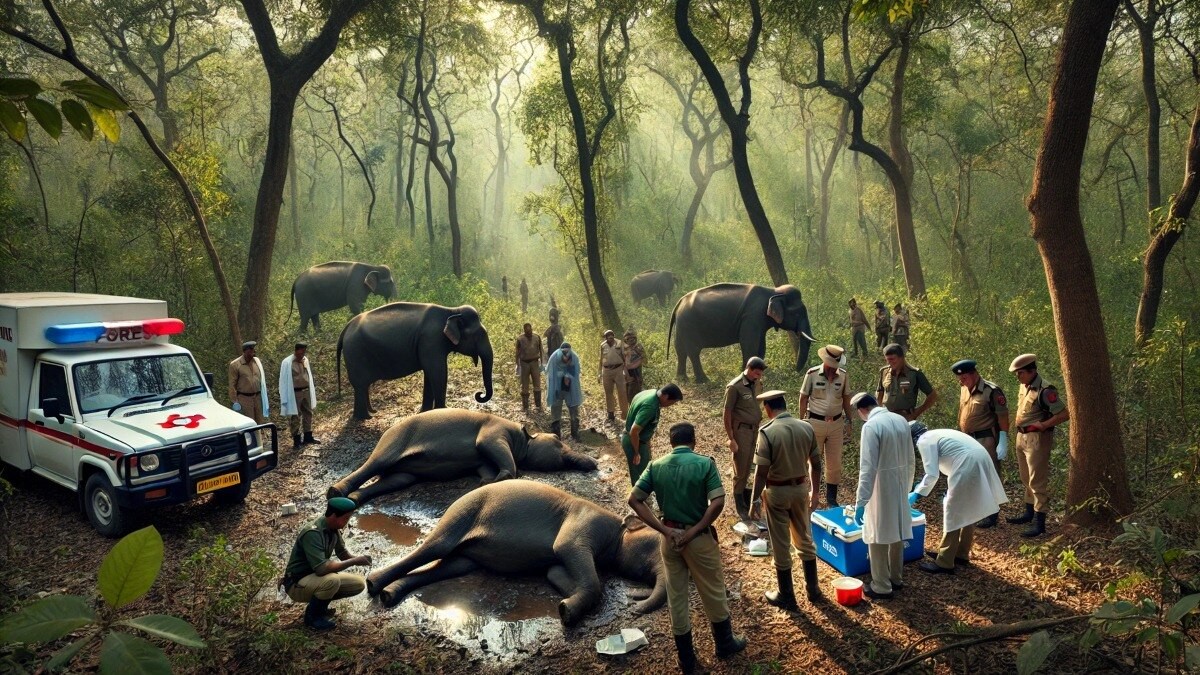
Royal Enfield recently launched the Guerilla 450 in India, and I rode one for over a week to ascertain whether it’s a roadster like RE is claiming or is it a scrambler, or is it an amalgam of both. Most importantly, like everyone else, I also wanted to find out how it fares against its only proper rival in the Indian market—the Triumph Speed 400. I have ridden the Triumph quite extensively as well, and although this story isn’t an outright comparison, I will be mentioning the Triumph for perspective, as and when necessary.
Design and Presence
The first thing that would strike you about the Guerilla 450’s size is that, unlike the Triumph Speed 400, it doesn’t look like a small bike. And it isn’t. It’s bigger than the Triumph, and for sure looks and feels that way too. Thankfully, despite sharing the platform with the huge Himalayan 450, the Guerilla 450 doesn’t feel even a bit intimidating. And that’s the first key difference between the Speed 400 and the Guerilla 450. While the former does look and feel like a small bike, the latter looks and feels like a big bike, but without getting big enough to appear challenging to ride. That’s one of the most important factors for many choosing a roadster in India, which brings me to the category of motorcycle it really is. See, RE is calling it a roadster, but I say it’s a mix of a scrambler and roadster. If you’ve seen a Ducati Scrambler, you’d know. The semi-knobblies (and the fattest ones at that) at both ends are more scrambler than roadster.
But (and you’ll understand this if you weren’t born yesterday)—I can bet my two-stroke pistons on the fact that the Guerilla’s designers are big fans of the RD350 LC. In fact, I won’t even be surprised to know if one of the designers owns a specimen of the eighties’ two-stroke hooligan. See, the LC (and the air-cooled RDs as well) is still lusted after globally, and though it’s most popular in the US, the UK has a sizeable number of ardent RD fans too. And the Guerilla was designed in the UK…
If that white Guerilla doesn’t remind you of the LC, you need to introspect whether you actually know your motorcycles… Of course, it’s not called “White” by the chaps as RE, because, just like every other auto manufacturer nowadays, even RE has bestowed superfluous names to the colours we could identify and pronounce correctly even before kindergarten.
Therefore, instead of just calling it White, they call it Brava Blue. You may insert your favourite facepalm emoji here. Seriously, RE, why not call it White when that’s the predominant colour on the bike? How does it become Brava Blue, or any blue for that matter, when there’s so little (thankfully!) of it on the bike?
Still, that’s my favourite colour on the Guerilla and I so wish my test unit came in that shade. I even like the Silver (it’s more of a Grey, actually), or “Smoke Silver” as RE prefers to call it, but that’s available only in the base Analogue variant, and manufacturers don’t provide base models to media.
My review unit, the one you see here in the majority of pictures, came in a colour scheme that’s called Yellow Ribbon by RE. Then there are two more, Playa Black and Gold Dip. Except the Silver, all other paint schemes are dual-tone, with, again, the Brava Blue being the easiest on the eye.
I must add here that while the dual-tone schemes may look gaudy to some in the pictures, they do appear quite palatable in person. However, it would help RE to introduce solid colours as well. The motorcycle would look great in solid Black, Red, and White.
A note to RE: Pease don’t name them Casanova Black, Seductive Red, and Pious White.
Ergonomics and Maneuverability
The Guerilla 450 is the motorcycle for you if you want the Sherpa 450 engine (RE’s first short-stroke single) in your motorcycle, but find the Himalayan 450 too big and bulky for your stature and/or for city riding. However, I most tell you that while the claimed seat height of 780 mm sounds delightfully low, the size, shape, and contours of the seat make it feel like an 800 mm high perch, which, like I have been saying for over a decade now, is the highest that all motorcycle manufacturers in India should strive to limit their motorcycles’ seat height at—anything higher takes away a large chunk of your potential customers in India.
Fret not, the Guerilla 450 is manageable for anyone with an inseam of 27 inches and above, provided they are not complete newbies. I tested the seat height back to back with the Triumph Speed 400 of a friend and found out that the Triumph’s seat was just a wee bit taller. Still, the Triumph is a bit easier to maneuver in traffic because it’s comparatively lighter than the RE.
Surprisingly, both motorcycles have the exact same turning radius as well, which is a great feat achieved by RE as the Guerilla’s wheelbase is much longer than the Triumph’s.
You also sit more upright on the RE, and while the shorter folks would find both motorcycles to be comfortable ergonomically, it’s the RE that will be chosen by the taller folks if they aren’t going all the way up to the Himalayan 450. I must also mention that while the Guerilla is certainly easier than the Himalayan as far as lifting the bike up from its side stand is concerned, the Triumph is twice as better in this regard.
Performance
The Guerilla 450 uses the same engine and gearbox as the Himalayan 450, and here as well it’s a stressed member of the chassis. I’ll talk about the handling in the next section; right now let’s focus on the engine and gearbox performance. The Guerilla 450, ladies and gentlemen, is the quickest and fastest retro roadster in India right now. I am obviously talking about the sub-500 cc roadster segment. In fact, it’s even faster than the Pulsar NS400.
What are the numbers, you ask? Well, my best 0–100 km/h (GPS) time on the Guerilla 450 was 6.8 seconds whereas the best I could manage on my friend’s stock Speed 400, at the same stretch, on the same day, was 7.5 seconds. The Guerilla 450 also has the least amount of speedo error among ALL motorcycles sold in India! I managed a true (GPS) top speed of 160 km/h, whereas the speedometer showed 163 km/h. The Speed 400 on the other hand has the biggest speedo error in the segment. Therefore, while its speedometer shows the needle going past 160 km/h easily, the true top speed is just around 150 km/h. Honestly, that’s still more than enough for our roads…
But the Guerilla isn’t as tractable as the Speed 400. For those not in the know, the tractability of a vehicle is defined as its ability to maintain low speeds in higher gears without lugging the engine. The benefit? Less fatigue due to comparatively fewer gear changes in city traffic, which in turn translates to an overall lower rpm range as well in such conditions. Less engine heat is also a direct offshoot, but it doesn’t necessarily mean that a more tractable engine will run cooler than a not-so-tractable engine. There are several other factors that determine the thermal efficiency of an engine.
The crux is that while the Speed 400 is more “rideable” in city traffic than the Guerilla 450, there’s negligible difference between the two as far as heat management is concerned. In fact, the Guerilla 450, surprisingly has a slight edge here. In other words, in fender-to-illegal-bull-bar traffic the amount of heat you feel on your legs is a tad less on the Guerilla 450 than what you feel on the Speed 400. Well, it’s not really a surprise after all because the RE runs a comparatively lower compression ratio (11.5:1) than the Triumph (12:1).
That said, I still wish RE played around with the ECU and gearing a bit more to make it more tractable. Right now it’s almost the same as the Himalayan 450.
Handling Braking & Ride Quality
The Guerilla 450, despite the aforementioned semi-knobblies (block-pattern tyres), handles and brakes with aplomb. Thanks to the sharp steering geometry, it turns in quickly, and there hasn’t been any compromise made on stability either. Yes, in the corners too the bike remains stable and there’s more than adequate tyre grip available at all times. Of course, the straight line stability is also nothing short of outstanding.
The brake force is stupendous, and the brake feel is brilliant as well. So, yes, it not only goes quicker and faster than the Speed 400, but handles and brakes better than it too.
As far as the ride quality is concerned, the Speed’s suspension feels comparatively plusher on mildly rough patches, but it’s the Guerilla’s suspension (especially the rebound) that’s more composed on rougher stretches taken at a fair clip. For perspective, the Scrambler 400X is better than both here, whereas the Himalayan 450 is obviously the king.
Fuel Efficiency
I just can’t understand RE’s logic of providing an abysmally small 11 L fuel tank on the Guerilla 450. I know they wanted to reduce the kerb weight and I am sure the design team also had a say in it, but, RE should have ideally given it a 15 L tank. It would have not only given them a clear range advantage over the Speed 400, but a bigger tank would have made the bike appear more muscular and substantial.
And, no, it wouldn’t have made the bike intimidating for us shorter folks.
Anyway, be prepared to get around 25 km/l in the city, and 30 km/l on the highway IF you’re not riding like a maniac all the time. If that’s how you want to ride a motorcycle, spend more and get the D390 instead.
Miscellaneous
Just like the Himalayan 450, there’s Bluetooth connectivity on the Guerilla 450 as well with turn-by-turn navigation, but, I neither used it on the Himalayan nor on the Guerilla as it requires your phone screen to be always on, otherwise it doesn’t work. Still, it’s a feature that’s not even an option on the Triumph. I don’t need it, but many would, especially the gadget freaks, and the Guerilla will score a point here for them.
I must also mention that while I approve of RE’s decision to not provide a tyre hugger, both for aesthetic and technical (read: “unsprung mass reduction”) reasons, in rains, your pillion’s back (or your backpack, if you’re eternally single) would get completely smeared with mud.
Verdict
You can look at the Guerilla 450 in two ways. If you’re a short rider, who loves the Himalayan but can’t buy one, the Guerilla would be a good alternative for you. It might not have the long travel suspension of the Himalayan, but it still has enough travel at both ends to keep you smiling on rough roads. And, of course, it has the performance of the Himalayan.
If you’re not a short chap, but still contemplating the Guerilla as an alternative to the Speed 400, you’d already know by now that while it might not be as easy as the Triumph in the city, it’s certainly more fun than it in the city and everywhere else. And FUN is the primary reason we ride motorcycles, don’t we? If you want “easy,” please go buy an Activa. Motorcycles might not be your thing…















